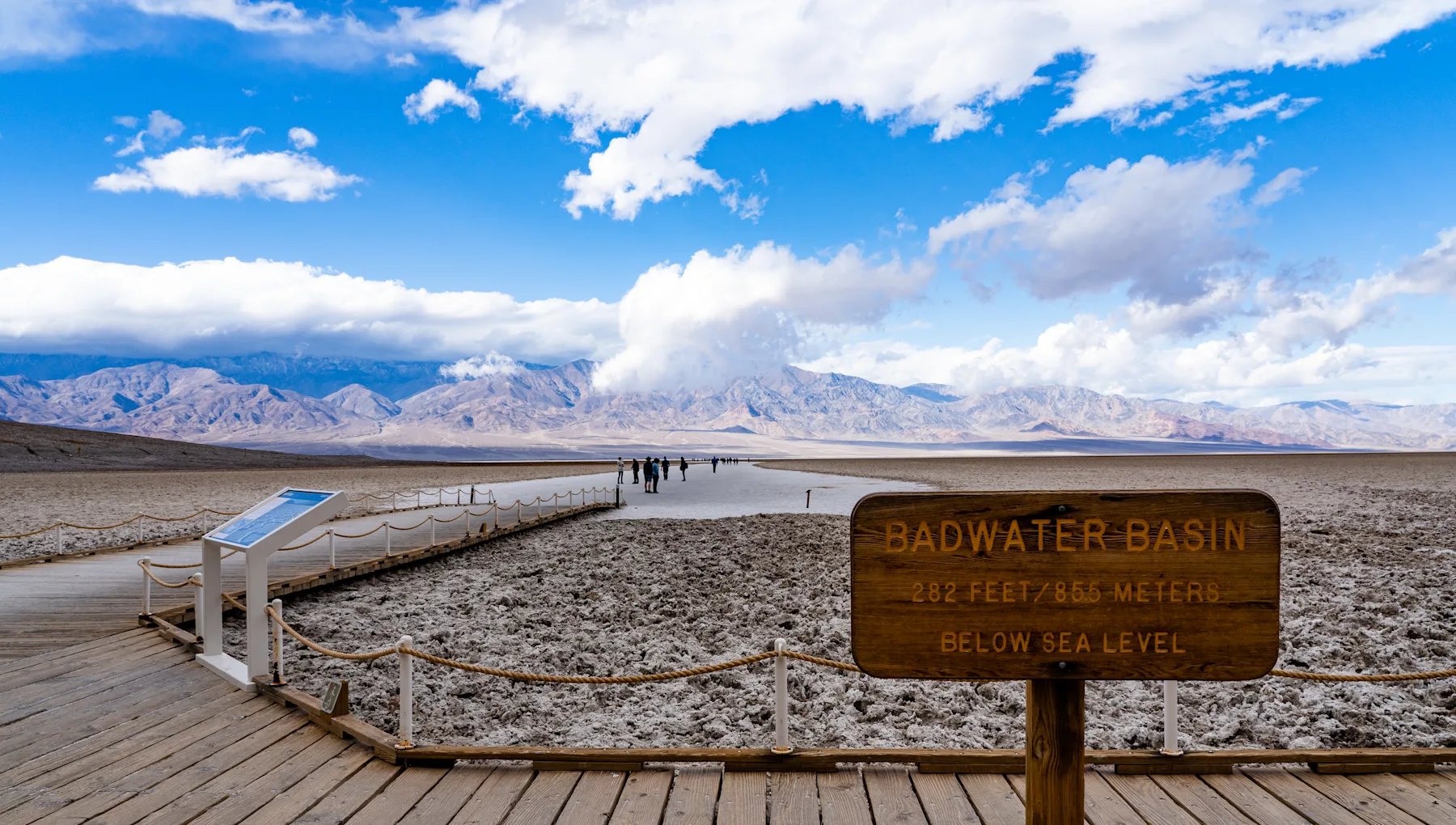 Introduction
Introduction
Death Valley National Park, located in eastern California and Nevada, is one of the most unique and extreme landscapes in the United States. Known as the hottest, driest, and lowest national park, Death Valley offers visitors a rare chance to explore surreal desert scenery, colorful canyons, salt flats, sand dunes, and even snow-capped mountains. Despite its harsh name, the park is teeming with life, history, and breathtaking beauty, making it a must-visit destination for adventurers, photographers, and nature lovers alike.
Geography and Climate
Death Valley covers over 3.4 million acres, making it the largest national park in the continental United States.
-
Lowest Point: Badwater Basin, at 282 feet below sea level, is the lowest point in North America.
-
Highest Point: Telescope Peak, at 11,043 feet, towers over the valley.
-
Climate: Death Valley holds the record for the highest air temperature on Earth—134°F (56.7°C) recorded in 1913. Summers are extremely hot, while winters bring milder temperatures ideal for exploration.
History of Death Valley
For centuries, Native American tribes such as the Timbisha Shoshone lived in Death Valley, adapting to its extreme environment. The valley earned its ominous name during the California Gold Rush of the mid-1800s, when pioneers struggled to cross the desert.
In the early 20th century, borax mining shaped the valley’s history, with the famous 20-mule teams hauling borax across the desert. Death Valley was declared a National Monument in 1933 and later became a National Park in 1994, preserving its unique landscapes and cultural heritage.
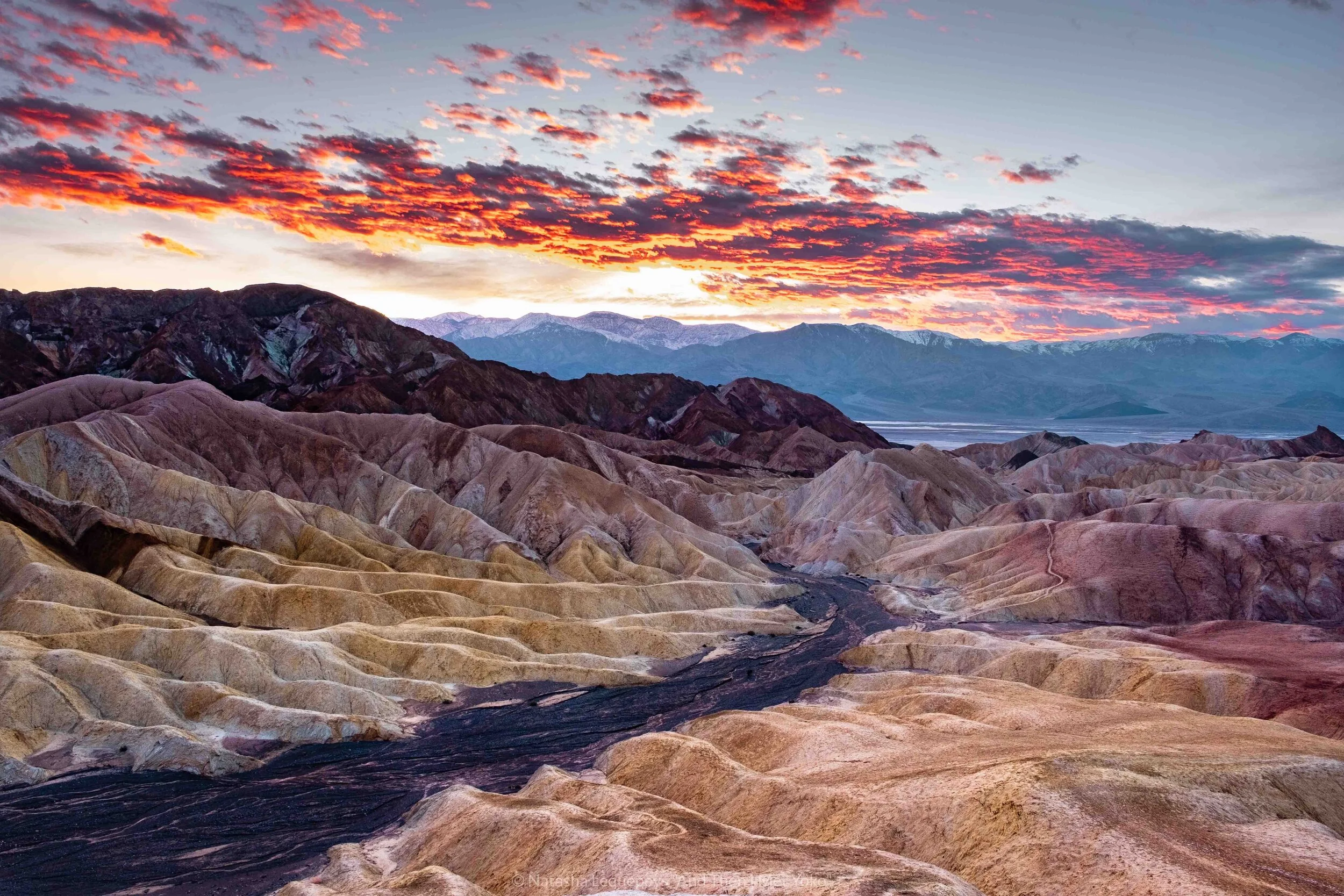 Top Attractions in Death Valley National Park
Top Attractions in Death Valley National Park
1. Badwater Basin Salt Flats
A surreal, otherworldly landscape of salt polygons stretching as far as the eye can see. Standing here means you’re at the lowest point in North America.
2. Zabriskie Point
One of the most photographed spots in the park, offering panoramic views of colorful badlands and eroded canyons. Best visited at sunrise or sunset.
3. Dante’s View
At 5,476 feet, this viewpoint provides sweeping vistas of the valley floor, mountains, and salt flats below.
4. Mesquite Flat Sand Dunes
Located near Stovepipe Wells, these sand dunes are perfect for hiking, photography, and even stargazing at night.
5. Furnace Creek
The visitor hub of the park, home to the Furnace Creek Visitor Center, campgrounds, restaurants, and the historic Furnace Creek Inn.
6. Artist’s Drive and Artist’s Palette
A scenic one-way loop drive through multi-colored volcanic hills. The mineral-rich rocks glow in shades of red, pink, green, and purple.
7. Golden Canyon
A short but beautiful hike through colorful canyons, often combined with the trek to Red Cathedral.
8. Ubehebe Crater
A massive volcanic crater, nearly half a mile wide and 600 feet deep, offering hiking opportunities around its rim.
9. Telescope Peak
For serious hikers, this challenging trail leads to the highest point in the park, with sweeping views of both Death Valley and the Sierra Nevada mountains.
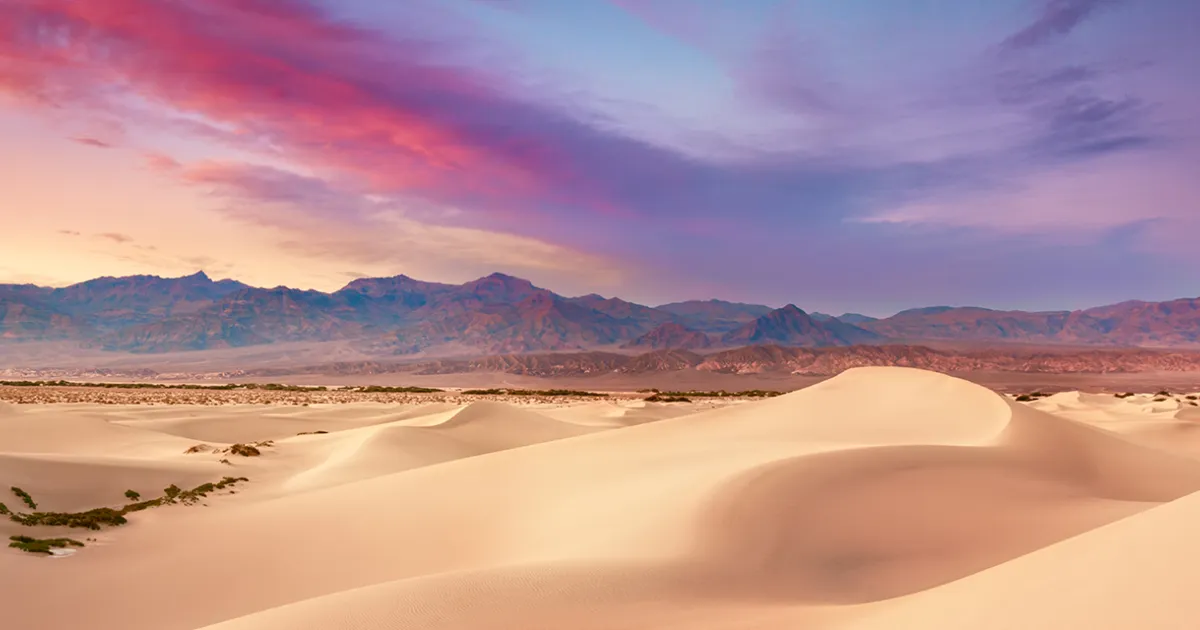 Things to Do in Death Valley National Park
Things to Do in Death Valley National Park
-
Hiking: Trails range from easy walks to strenuous treks.
-
Stargazing: Death Valley is a Gold Tier International Dark Sky Park, offering some of the clearest night skies in the U.S.
-
Wildflower Viewing: In rare years, spring brings a super bloom of wildflowers.
-
Scenic Drives: Explore routes like Badwater Road, Artist’s Drive, and the journey to Dante’s View.
-
Camping: Choose from campgrounds at Furnace Creek, Stovepipe Wells, and Wildrose.
Best Time to Visit Death Valley
The best time to visit is from late fall through early spring (October to April), when temperatures are cooler and more comfortable.
-
Winter (December–February): Mild weather, perfect for hiking.
-
Spring (March–April): Chance to see wildflowers and pleasant daytime temperatures.
-
Summer (May–September): Extremely hot; not recommended for casual visitors but still popular for adventure seekers.
How to Reach Death Valley
-
By Car: Most visitors drive to the park. It is about 120 miles from Las Vegas and 300 miles from Los Angeles.
-
By Air: The nearest major airports are Las Vegas (LAS) and Los Angeles (LAX).
-
By Bus/Tour: Guided tours from Las Vegas are available for those without a car.
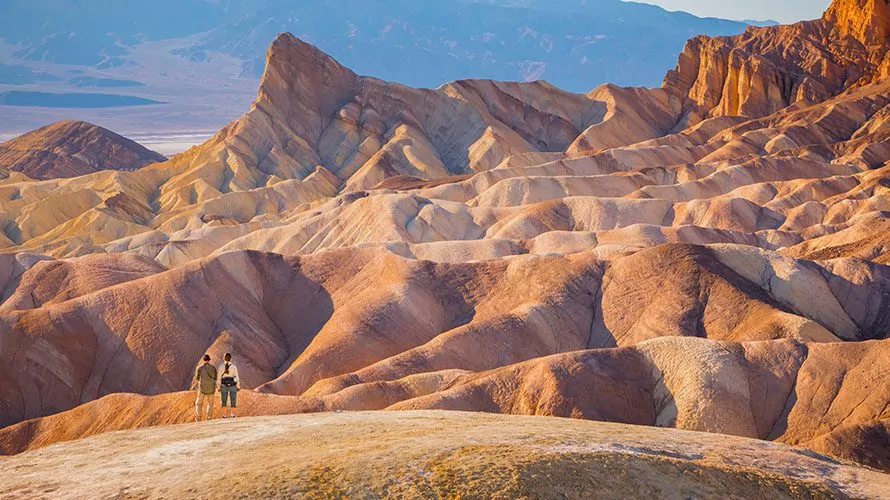 Accommodation Options
Accommodation Options
-
Hotels & Resorts: The Inn at Death Valley (luxury) and The Ranch at Death Valley (mid-range).
-
Campgrounds: Furnace Creek, Sunset, and Texas Springs campgrounds are popular choices.
-
Backcountry Camping: Permits required for remote camping experiences.
Travel Tips for Visitors
-
Carry Plenty of Water – At least one gallon per person per day.
-
Check Weather Conditions – Extreme heat can be dangerous.
-
Fuel Up – Gas stations are limited within the park.
-
Wear Sun Protection – Hats, sunglasses, and sunscreen are essential.
-
Download Maps – Mobile service is limited in many areas.
-
Respect Wildlife – The park is home to desert bighorn sheep, roadrunners, and coyotes.
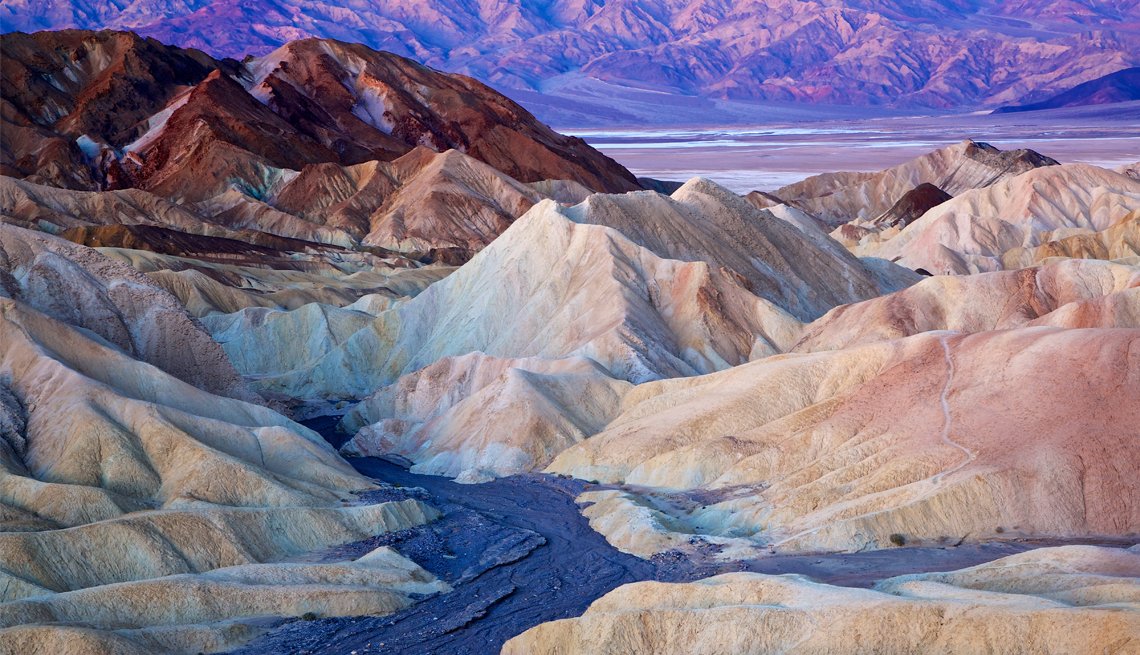 Fun Facts About Death Valley
Fun Facts About Death Valley
-
Death Valley is larger than the entire state of Connecticut.
-
Despite its name, the valley is full of life, including over 1,000 plant species.
-
The mysterious sailing stones of Racetrack Playa move across the desert floor without human or animal help, pushed by a rare combination of ice, wind, and water.
-
Death Valley was a filming location for movies like Star Wars and Indiana Jones.

You must be logged in to post a comment.